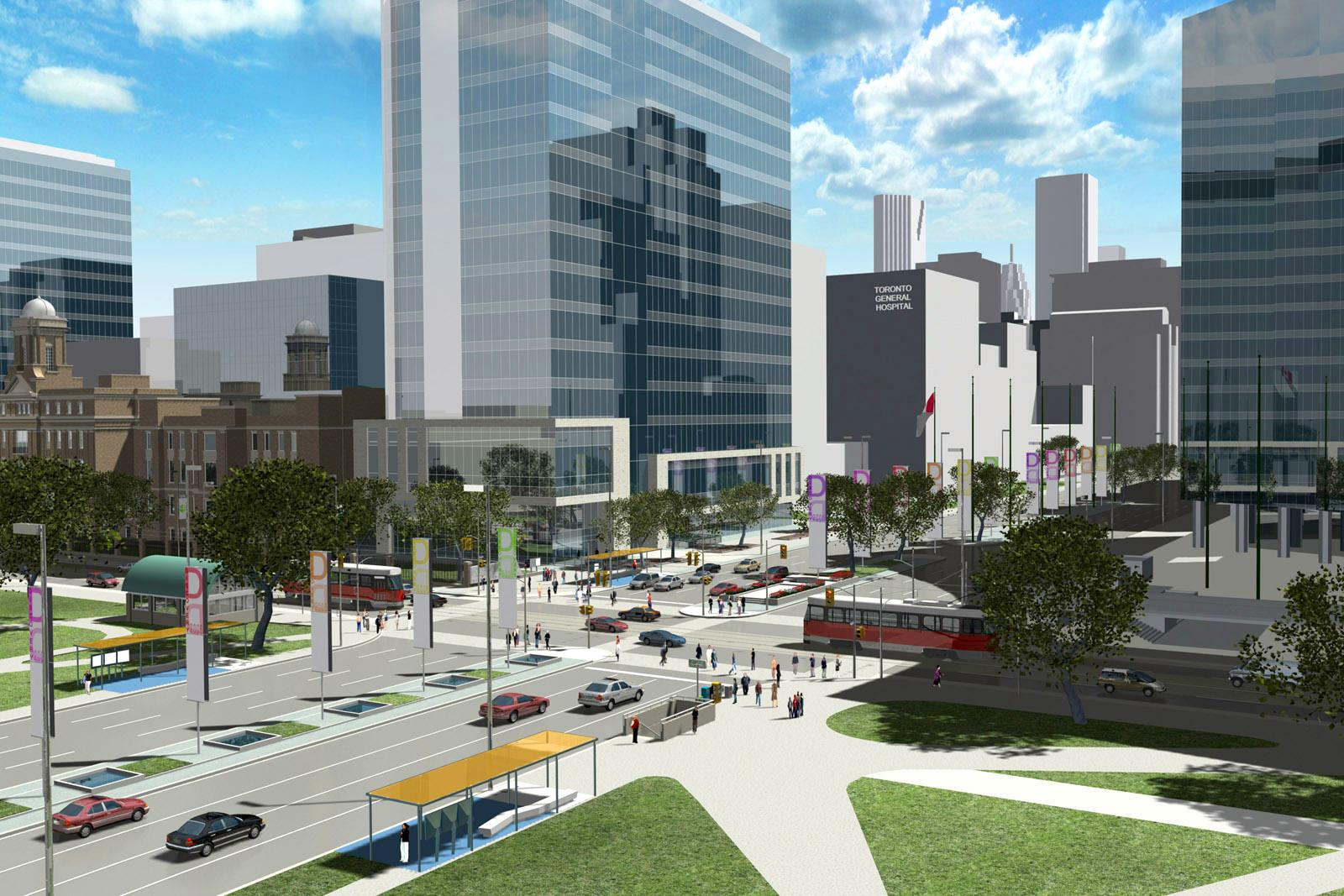Toronto’s Discovery District: Capital Design Strategy

The chief ambition of the Capital Design Strategy for The Discovery District Area is to find the most effective means for the City of Toronto to create a strong identity (or “brand) for the burgeoning biomedical research industry accommodated in this area of the City, through its urban design elements in the public domain. Although the main industry is the biomedical research field, the term “Discovery” has been invented by the City to allow a multiplicity of interpretation of different university faculties and cultural initiatives. Our project team have been looking at long term, medium term and short term design strategies to achieve these aims.
The biomedical research industry in Canada is the fourth largest internationally; Toronto has the second largest international concentration of biomedical research. Our aim for this Capital Design Strategy is to build upon the enthusiasm that has been expressed by the Discovery District community to create a public realm that will act as a catalyst and partner to the private realm – attractive to investment, tourism, and the local workforce and citizens.
Cultural Tourism
The Discovery District, as a co-inhabitant with a strong new cultural policy to be instituted along University Avenue, can potentially take good advantage of the Cultural / Superbuild Renaissance currently under construction. The AGO, OCAD, ROM, CCBR, Pharmacy Building, and the new Opera House, are all either within the boundaries of the Discovery District or at its perimeter. This provides an exciting potential for cultural tourism combined with the biomedical research visitors for commercial / retail programming that will bring the “Florida effect” to the Discovery District. “Cultural attractions and urbane neighbourhoods are an important draw to new industries in North America.”
Short-Term Strategies
It is important that visible interventions be determined that can immediately identify and brand the Discovery District in the short term. Many of these strategies have been identified for development in the design phase including:
- Banners: strategies for attachment to existing buildings and infrastructure of “super-sized” banners as a semi-permanent identifier of the area.
- Street signs: locations for Discovery District street signs has been proposed for this year’s capital budget
- Medical Walk of Fame: Working with the Walk of Fame initiative developed by the EDCT, our team will develop a number of alternatives that take the programme beyond the “slab in the sidewalk” to a more physically imposing display that will provide much more prominence to the “Hall of Famer” and much more information to the public.
- Re-naming University Avenue: “University Avenue – Avenue of the Arts and Sciences” to mark the confluence of the cultural and scientific milieus that both occupy Toronto’s premier avenue. This will announce in an ongoing and very public way the new economic initiatives both in cultural tourism and in the biomedical research industry that will be centred on University Avenue.
- Re-naming Queen’s Park Subway Station: “Queen’s Park / Discovery” to establish the district in the public transit milieu. The underground connection between the University, the hospitals and the provincial legislature buildings is a critical junction in the Discovery District’s main intersection, and will also announce to a large audience of students, researchers, general public and tourists the presence of the Discovery District.
- Public Information: Potentially related to the Medical Walk of Fame, a comprehensive network of digital / interactive signage elements that are placed strategically throughout the Discovery District have been endorsed by all the stakeholders as a significant contributor to the public’s understanding of the vital work being carried on in both the research hospitals and in the University. The broad theme of “Discovery” also allows related fields like Design, and Engineering, and the energy efficiency initiatives of the OPG to be highlighted in this proposed network of public exhibit panels.
- Lighting : Special lighting effects and a distinctive lighting element will be proposed for the Discovery District to promote its 24 hour use by the general public, tourists and the research community.
Full Report
View the full Capital Design Strategy report here.





